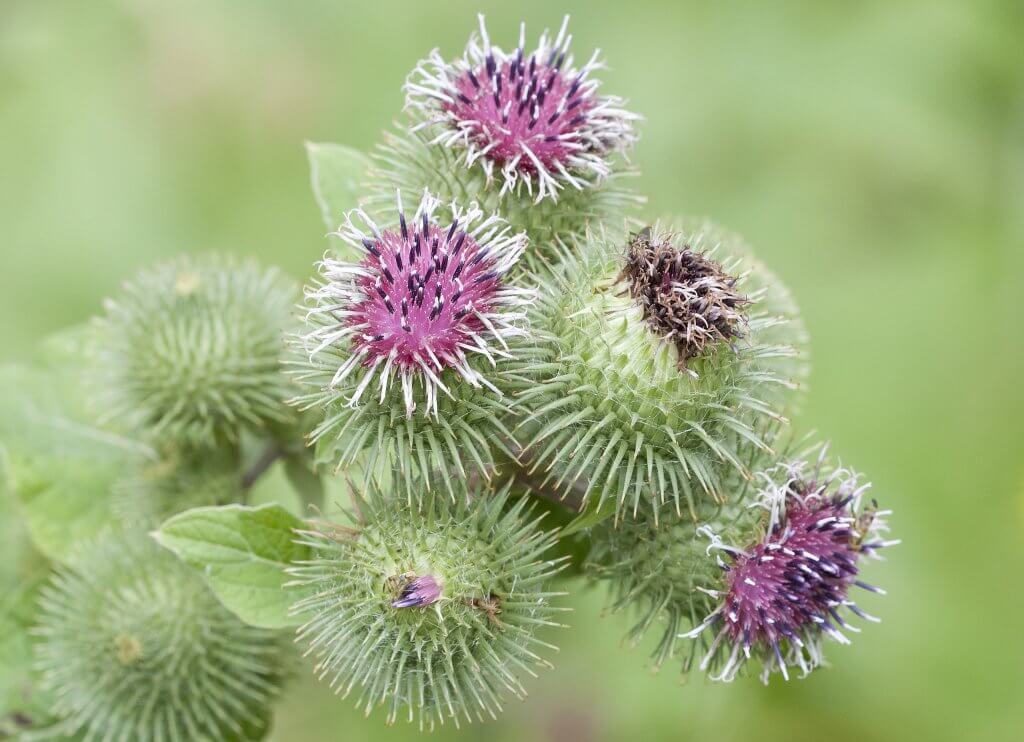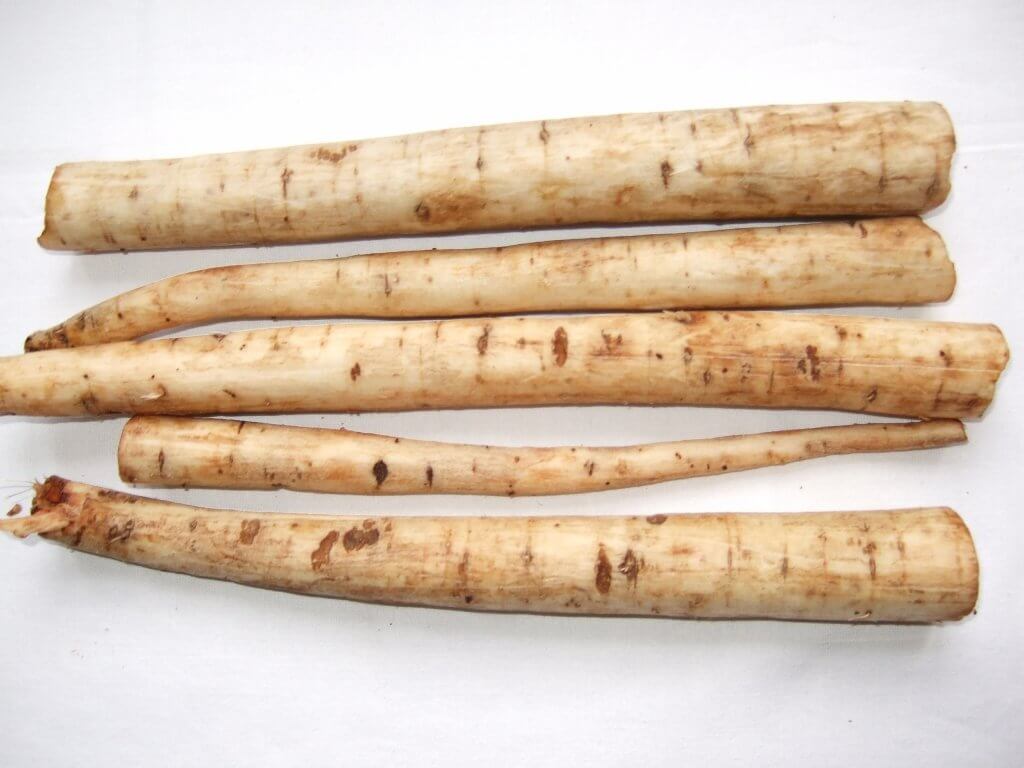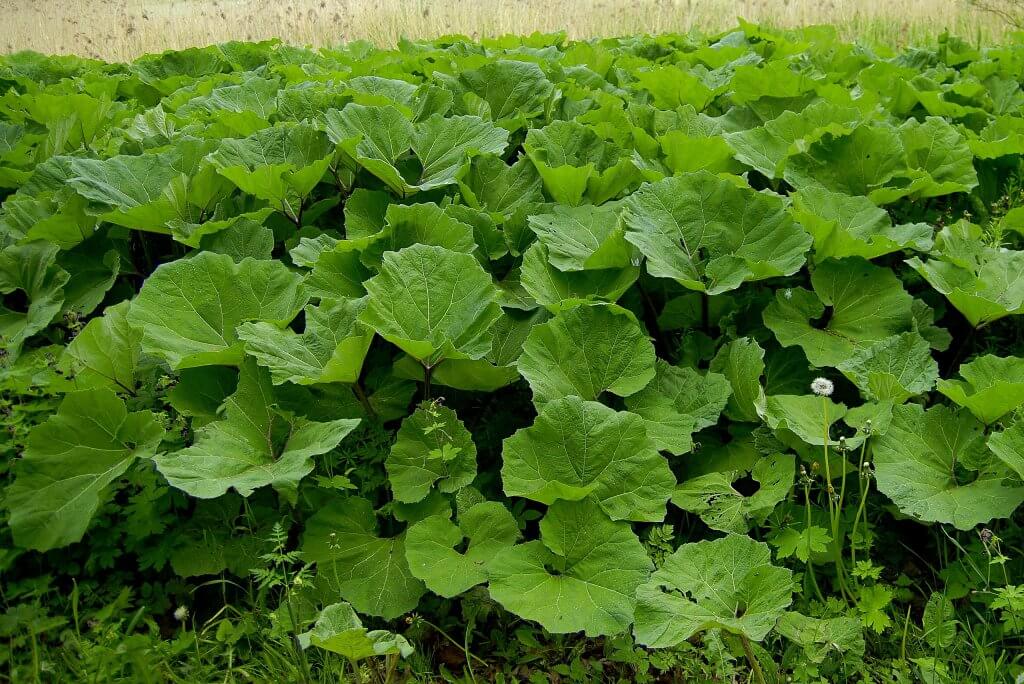Burdock (Arctium spp.) is a genus of plants originally native to Europe, but now fairly widespread throughout the world. From Australia to North America. Burdock was once widely used as a medicine, and transported to colonised areas from Europe, explaining its spread around the globe. They are fast growing, and considered an invasive weed species to many farmers. For these reasons you are likely to find them growing in many areas. From forest edges, to urban wasteland with recently disturbed soil.
The plants typically reach no more than 2.5m in height, with a centralized stalk featuring a number of stems. The leaves are large and dark green, with waved edges and a fine hair on the underside.

When out walking from June to October, you are likely to recognise them instantly by their distinctive flowers. Prickly, green spheres with a smaller purple flower towards the end. As the flowers begin to wither, and dry, they loosen and become easily entangled in fur and clothing. Helping to disperse the seeds. These dry seed heads were in fact the inspiration behind the invention of Velcro.
Two species in particular are extremely common throughout the US. These include the common burdock (Arctium minus) and also greater burdock (Arctium lappa).
Edible parts and other uses
Young leaf shoots, leaf stems, taproots and flower stalks are all edible parts of the burdock plant. The young shoots and stems can be peeled, washed and eaten raw, or cooked into a stir fry or soup.
The roots are the most widely known part of the burdock plant. They are cultivated within Japan, Korea and China as a popular vegetable ingredient in a variety of dishes. The sweet and piquant flavoring adds depth to a dish. They are high in fiber and other beneficial nutrients, meaning they are catching the eye of local food bloggers and dietary specialists.

Perhaps one of the most widely consumed burdock commercial products is the drink dandelion and burdock. A popular soft drink within the United Kingdom which has been enjoyed and developed over several centuries.
As well as their edibility, many medicines have been created using burdock plant parts. From relieving symptoms of fevers, colds and flu. To an alternative treatment for joint pain, acne and even serious diseases like cancer or liver disease. Whilst studies have shown it may have anti-bacterial properties, it is not currently considered effective in modern medicines.
Cautions
Burdock is considered very safe to consume, however the spiked seed heads should be avoided. As with many plants, and all food, only consume with moderation. A high quantity of any plant could cause stomach upsets. Similar to other wild plants, burdock can cause an allergic reaction if applied to the skin.
Foraging
The large wavy edged leaves and distinct flowers will help you to identify burdock when foraging. As with all wild plants, correct identification is absolutely crucial, however burdock does not have any known toxic lookalikes, so foraging is a safe activity.
Generally greater burdock is best for harvesting and foraging, however common burdock is extremely similar in flavor and properties.

If harvesting the roots, be sure to select a young plant, within the first two years of its growth. You can usually identify a young plant by the absence of a flower stalk. The root can break easily, so patience and care is key for removing this prize from the soil.
Rhubarb (Rheum spp.) is sometimes mistaken for burdock due its large leaf size and red streaks in the stem. However burdock stems are more deeply grooved (not smooth like rhubarb), and their coloring is of a deeper maroon.
Did you know…
Burdocks medicinal history also translated into the plant becoming a symbol of health and pureness that repels evil (disease and bad omens). Within Turkey a stylised symbol of the burdock plant is often woven into their textiles, particularly rugs and carpets.
Conclusion
A weed to some, an unlikely source of nutrition and flavor for others. Burdock is a great plant to forage from a local area. The roots in particular are great to experiment with in the kitchen. If growing your own source within the garden, be sure to monitor their advancement, as they spread quite prolifically.
—————Written by Hannah Sweet
Hannah is a freelance writer and graphic designer from the UK. With a penchant for travelling, photography and all things botanical, she enjoys writing about a wealth of topics and issues, from conservation and slow living, to design and travel. Learn more about her writing and design services at www.sweetmeanders.co
Many of our readers find that subscribing to Eat The Planet is the best way to make sure they don't miss any of our valuable information about wild edibles.
See our privacy policy for more information about ads on this site






